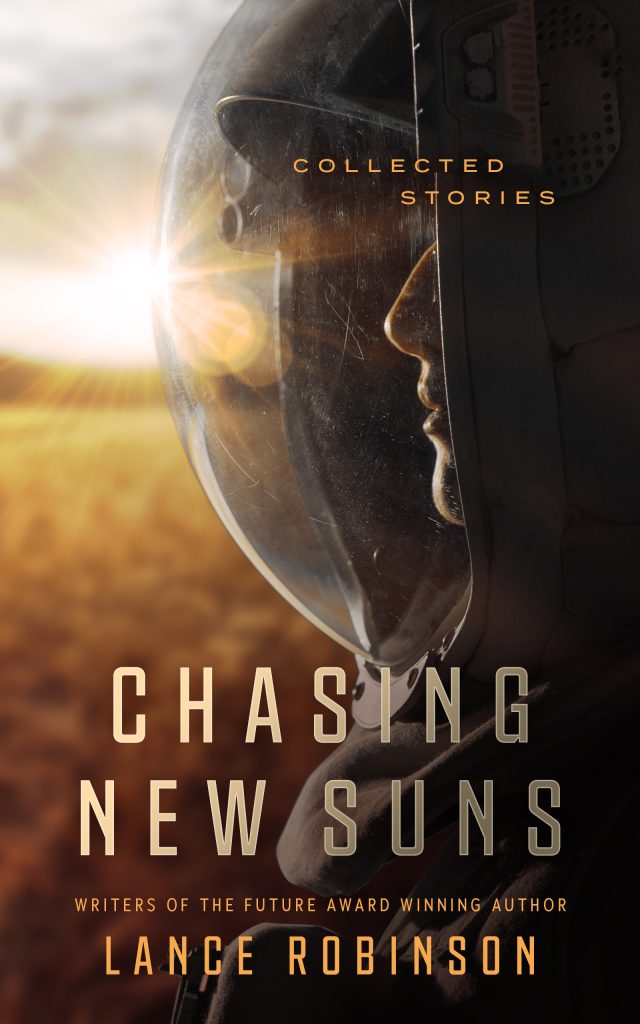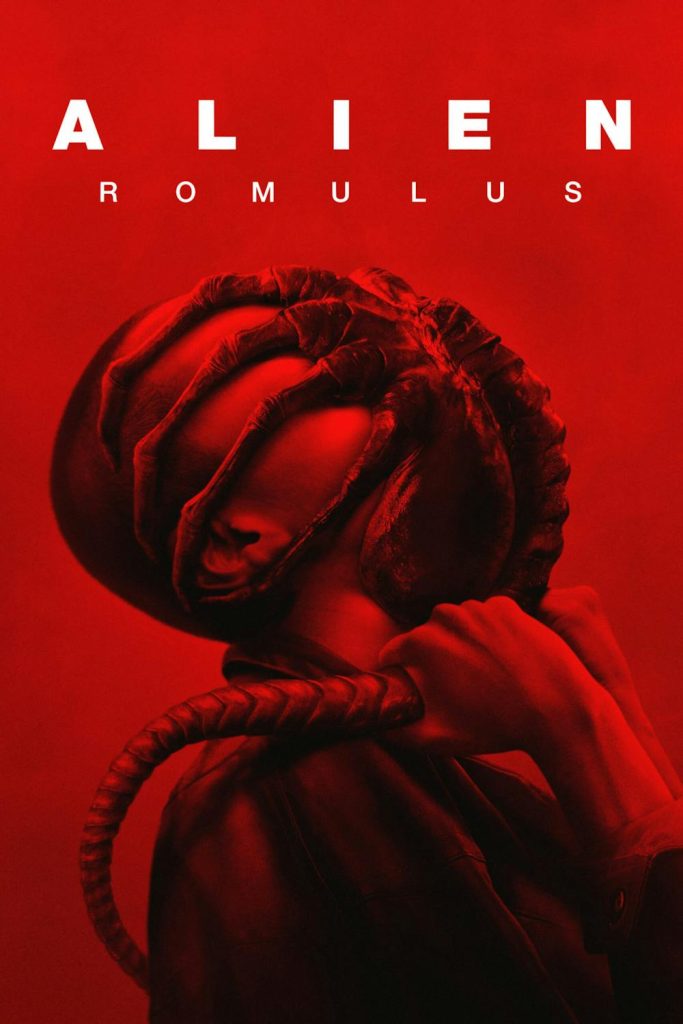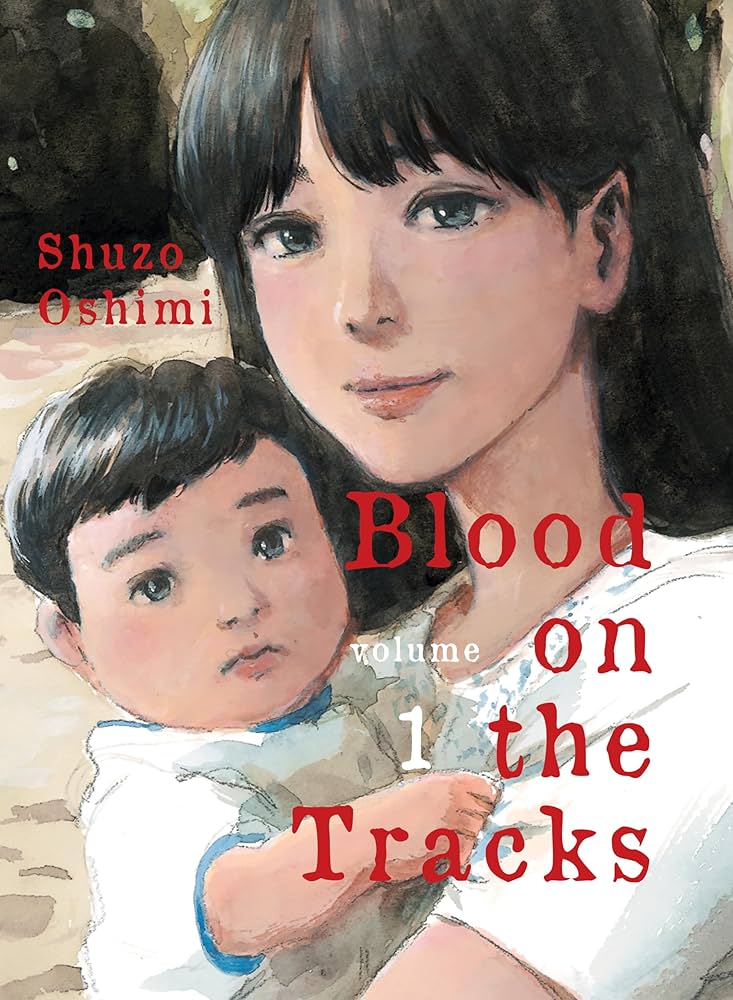Chasing New Suns
By Magdalena Nitchi

If you’re looking for science-fiction short stories akin to Asimov and Clarke that tackle social problems through a contemporary lens, look no further than Lance Robinson’s Chasing New Suns. I first encountered Robinson from his short story “Five Days Until Sunset,” which was featured in L. Ron Hubbard’s Writers of the Future Volume 40. Robinson’s collection holds that story alongside six other riveting tales that will delight any sci-fi fan.
Robinson dives into a wide variety of themes and characters, from hard science fiction about a crisis of faith in an international space station to a far-future sci-fantasy set on a distant planet. His characters are empathetic and relatable, and Robinson’s humanistic perspective makes it easy to root for them. While there is no single theme running through Chasing New Suns, many of the stories examine humanity’s relationship to nature and how we deal with our planet’s limited natural resources. I particularly enjoyed “Money, Wealth, and Soil,” a story about struggles with Indigenous land rights and how to make environmental concerns profitable for capitalists in order to save the earth.
However, I was ultimately drawn to the duology of stories that bookends the collection. “Five Days Until Sunset,” the opening story, is actually a prequel to “Chasing the Sun,” with both stories set on the same planet in a distant future. In “Five Days Until Sunset,” prospective settlers arrive on the planet Epsindi Ta, following a Promise set for them by humans millenia ago, only to notice that something is very wrong. “Chasing the Sun,” set several generations later, follows their descendants in a poignant story of territorial disputes, and is far more lyrical in style. Reading about the developing spiritual beliefs and relationship to the land held by these two groups of people was mesmerizing.
Robinson has been steadily publishing short stories in various outlets for years, and Chasing New Suns represents a culmination of his work. It features an excellent variety, and I look forward to following Robinson’s writing career, especially if it expands the universe of the planet of Epsindi Ta and its people.
Alien: Romulus
Par Magdalena Nitchi

Alien est un film de science-fiction/horreur si omniprésent dans la culture populaire qu’il serait difficile de trouver quelqu’un qui n’en a pas entendu parler. Bien que ses suites soient moins appréciées par les fans, j’ai toujours eu une faiblesse dans mon cœur pour chacune d’entre elles. Il est vraiment difficile de capturer la magie originale du premier film, mais après avoir visionné l’opus le plus récent de la franchise, je suis heureuse de constater que Alien : Romulus s’y approche. Ce film est sombre, inquiétant et étrangement beau à la fois, de loin le meilleur film d’horreur que j’ai vu cette année, surpassant même I Saw the TV Glow. Tous les aspects du film, y compris les personnages, les effets techniques, l’esthétique et les frayeurs, m’ont tenu sur le bord de mon siège.
Le réalisateur et scénariste Fede Álvarez tourne son attention sur un groupe de jeunes pauvres coincé dans une colonie minière. Lorsque la station spatiale Weyland-Utani dérive à proximité des anneaux entourant la planète LV-410, ils y voient une opportunité de récupérer des chambres cryo-statiques qui leur permettraient d’échapper à leurs contrats oppressifs et de recommencer leur vie sur une planète indépendante, au delà du contrôle de l’entreprise. Malheureusement pour eux, cette station spatiale s’avère avoir récupéré les restes du Nostromo et transporte une cargaison mortelle. En retirant du carburant afin d’alimenter les chambres, ils raniment accidentellement et libèrent un groupe de face-huggers; ainsi commence la folie.
Même si les poursuites pleines d’adrénaline et les tentatives d’évasion qui s’ensuivent sont passionnantes, c’est la fin du film qui m’a vraiment coupé le souffle. Les films Alien ont toujours exploité deux peurs primaires : celle d’être poursuivi par un prédateur plus fort que vous, et l’horreur corporelle de voir votre propre tueur grandir dans votre corps. Je ne gâcherai rien, mais l’horreur corporelle atteint de nouveaux sommets d’une manière qui m’a laissé un sentiment d’effroi persistant des heures après la fin du film.
Je vous recommande fortement non seulement d’aller voir ce film, mais de le faire avec un ami pour pouvoir en parler par la suite. Alien : Romulus est un film digne des éloges qu’il reçoit et à ne pas manquer pour tous ceux qui aiment l’original.
Blood on the Tracks
By Olivia Shan

Shūzō Oshimi’s psychological horror masterpiece Blood on the Tracks — whose seventeenth and concluding English volume has finally been published by Kodansha this September — is undoubtedly the most affecting manga series I’ve read in the last few years. The series follows Seiichi Osabe, a middle school student who superficially seems to live a very conventional life; he’s sensitive and naive, has doting parents and friends, and develops a crush on a cute classmate. However, his entire life trajectory will be irrevocably changed during a mundane family outing, when his mother Seiko throws his cousin off of a mountain cliff.
Seiichi’s life quickly goes down a horrifying downward spiral as he is relentlessly manipulated by his disturbed, overprotective mother, who insists on dragging him into complicity. Oshimi is at his most brilliant when portraying his characters’ distorted memories and repressions through long, surrealistic scenes featuring his intricate, imposing black lineart, as well as his mastery of space and dialogue.
Having now completed four seinen manga series which all, to varying levels, explore the dark, disturbing, psycho-sexual underbelly of the coming of age experience, Oshimi’s narrative style at times toes the line from uncomfortable to downright exploitative. But Blood on the Tracks stands out among his portfolio as his most measured and grounded work.
That is not to suggest that this series is toothless; in fact, I would strongly suggest readers, especially those who are sensitive to explicit portrayals of familial abuse and trauma, to thoroughly familiarise themselves with its story before diving in headfirst. Blood on the Tracks feels like a car crash that you can’t look away from; Seiichi’s mental unravelling is bare, raw, and deeply upsetting. There were many points where I needed to collect myself before continuing onto the next chapter.
Despite the story’s at times overwhelming melancholia, the imperfect, non-linear nature of Seiichi’s eventual road to recovery is understated and authentic in ways I have rarely seen in other works of fiction. In Blood on the Tracks, Oshimi has crafted a truly singular and poignant story of human resilience, which is spellbinding in its emotional intricacies and utterly unforgettable.
